French revolution
1789–1799
the monarchy that had ruled
over France for centuries collapsed within three years due to a social
uprising. The new 'enlightenment' values equality, citizenship and inalienable rights. in 1792 a
republic was declared and King Louis XVI
was executed the following year. The French revolution is considered a crucial
influence in western and even in British political life during the 19th
century. The idea of Avant Garde developed around the 1800's following the
French Revolution.
Eugene Delacroix's liberty leading the people
1830
19th century design
France's design during the 1800's was a revival of old 17th and 18th century styles. French style was luxurious and glamorous and influenced Britain's style during the late 1800's (The Victorian Period). Gothic details and Renaissance forms were used and admired by cabinetmakers, furniture became over the top and oversized.

Product labels during the 19th century

19th century hair design
The industrial revolution
18th-19th century
the beginning of a modern
age. the revolution began in Britain during the late 18th century with the
invention of the steam engine and progressed to America in 19th century. New
inventions and advances in technology meant that things that were once handmade
in homes were being mass produced in factories.
Electrical Power Station
The first electric power station was built
by Sigmund Schuckert in the Bavarian town of Ettal.
The efficiency of the quickly expanding railway system meant that goods were becoming more easy to transport. As a result of the industrial revolution and expansion of factories, many rural workers were left unemployed which led to the Long Depression.
In 1811, John Blenkinsop designed the first successful railway locomotive called the Rack Railway, powered by steam, the locomotive ran between Middleton Colliery and Leeds.

In 1874 Alexander Graham Bell invented the first practical telephone.

A 23-year-old German university student, Paul Nipkow proposed and patented the first electromechanical television system in 1884. Although he never built a working model of the system, variations of Nipkow's spinning-disk "image rasterizer" for television became exceedingly common, and remained in use until 1939.

The first short film was produced in 1888 by Frenchman Louis Le Prince.
Roundhay Garden Scene was recorded with 12
frames per second and runs for 2.11 seconds.

Rain, Steam and Speed - The Great Western Railway: 1844
Joseph Mallord William Turner was an English romantic painter/watercolourist
during 1775-1851. The 1840's was the period of 'railway mania' and Turner was fascinated by the railways speed and movement, he tried to capture the feeling of exhilaration he got from riding with his head out of a carriage window within his painting.
The Great Exhibition
took place in 1851 at The
Crystal Palace. The Crystal Palace itself was designed by Joseph Paxton and
built from the newly invented Cast plate glass and iron. Costing the equivalent
to £13 million in today's money, the Palace was destroyed in a fire on 30th
November 1936.
The exhibition was designed
to celebrate Britain's superior aptitudes in mechanical engineering and
technology. It was also an opportunity to show of London's economic superiority
as invitations to the exhibit were sent out internationally.
The Crystal Palace exterior
Inside The Crystal Palace during The Great Exhibition
The exhibition was designed to celebrate Britain's superior aptitudes in mechanical engineering and technology. It was also an opportunity to show of London's economic superiority as invitations to the exhibit were sent out internationally.
‘From traditional crafts to industrial art’ Great Exhibition 1851
Frederick Bakewell's facsimile machine was amongst designs exhibited.
The facsimile is known today as the Fax Machine.
Silver plate by Sheffield manufacturers James Dixon & Sons were
also displayed at the exhibition.


Designers influenced by the Great Exhibition include Christopher Dresser.
Dresser was 17 years old when he visited the exhibition, his work (below) was inspired by the oriental designs he saw.

Dresser went on to design wallpaper that used bright colours, floral's and geometric patterns.
He was one of the first designers to make wallpaper not only for the rich but available to the common English home.
Designer Edward William Godwin was greatly influenced by the Japanese prints he saw at The Great Exhibition and created oriental furniture, pieces were often made from ebonised wood which gave his work a modern monochrome look.

Mass Production
Electricity was being supplied to London by two large companies. Between 1919 and 1924 the London's consumers doubled in size and company profits rose from 217,473 to 650,509.
A new modern labour-saving world was developing.
the two most common pieces of electrical equipment in British homes were the electric iron and the electric radio. The electric kettle was a relatively luxurious item costing 25 shillings in 1929.
1909 AEG Kettle (Designer Peter Behrens)

In 1883 Henry W Seely of New York invented the 'Electric Flat Iron'.
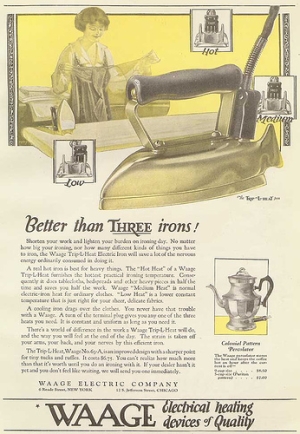
The 'Hotpoint iron' designed by Earl H. Richardson in California, was launched in 1905, and was the first electric iron to have any commercial success.
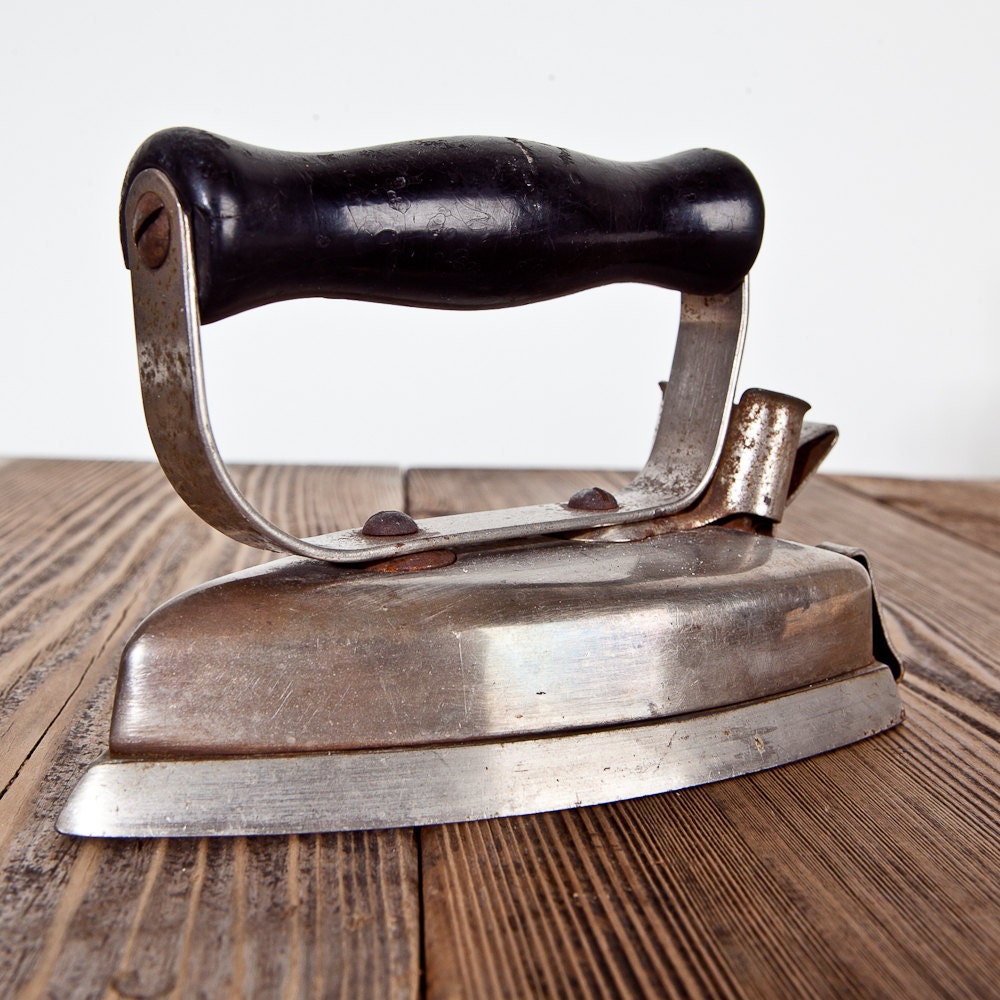
H. Cecil Booth has the strongest claim to inventing the motorized vacuum cleaner.
After seeing an early demonstration of air blowing dirt away rather than sucking, Booth proposed that sucking air through a filter would be a better system, and thus invented an early version of the vacuum cleaner which was manufactured by Fielding & Platt of Gloucester. Booth's design was better suited for industrial use than for household use and his company was soon overtaken by his competitor, Hoover.
his company continued to specialize in industrial vacuum cleaners. All modern vacuums are based on Booth's principle.
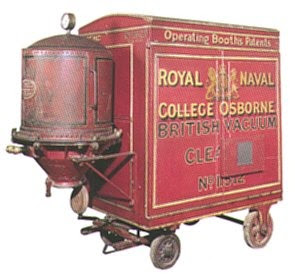

The Ford Model T
Regarded as the first affordable automobile.
Produced from September 1908 to October 1927
by Henry Ford's Ford Motor Company.

The Singer sewing machine in 1870 produced
by Singer Manufacturing Company.
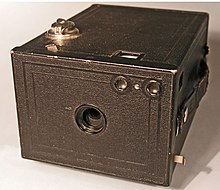
The Kodak Box Brownie Camera.
The first Brownie was introduced in February, 1900 made by Eastman Kodak.
One of the most popular Brownie models was the Brownie 127 which sold
millions between 1952 and 1967.
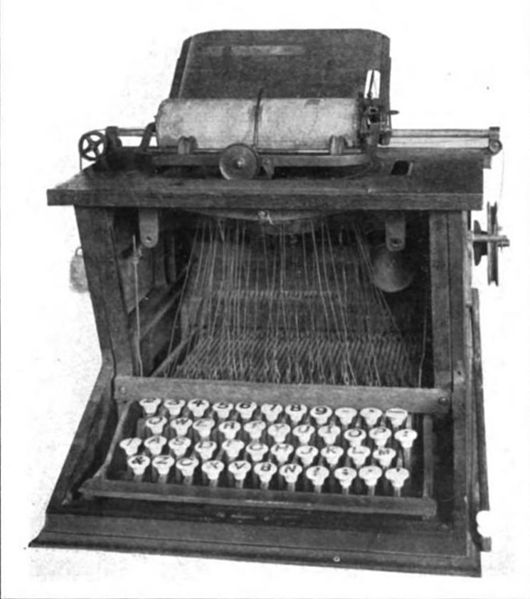
invented by Christopher Latham Sholes, Carlos Glidden
and Samuel W. Soule between 1868 and 1873 and
manufactured by Eliphalet Remington & Sons Co of New York.
As well as being the first commercially successful typewriter it was also the first
to use the QWERTY keyboard layout invented by Sholes.
The Arts and Crafts Movement
‘From traditional crafts to industrial art’ Great Exhibition 1851.
From the industrial revolution new materials were being developed, this coinciding with the newly expanding railways, saw the rise of mass production.
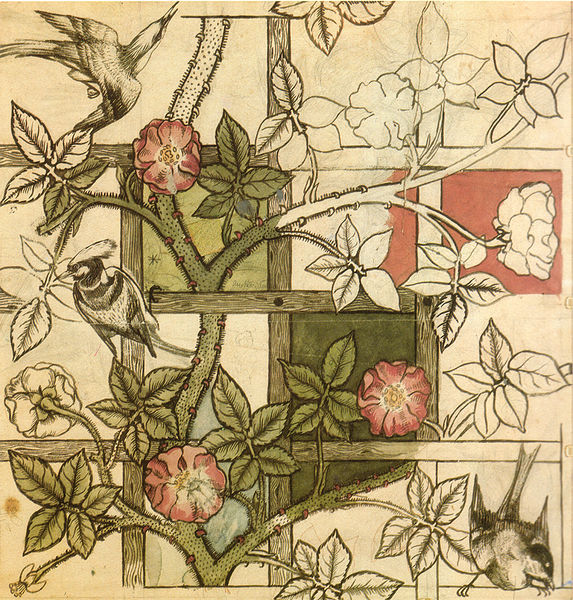
Jewellery designs By Jensen.
Nature greatly inspired Jensen's work and many
other Artists of the crafts movement.

The
Beginning Of Modernism
The war ended leaving
a new generation of families struggling to rebuild their lives. The need for
inexpensive household furnishings grew which coincided with mass production.
The age of 'status
symbol' furniture was gone replaced by abstract and sculptural aesthetics as
well as mass produced products both fuelled by the 19th century developments in
new materials.
Prominent figures of
the movement include Le Corbusier, Walter Gropius, and Ludwig Mies van der Rohe.
Modern
materials
Plastics were
developed during the mid 19th century which changed the physical world within
the home, art, workplace and almost every industry and profession.
Electricity, the
telephone, the automobile - and the need to work with them, repair them and
live with them - created the need for new forms of manners and social life. New materials influenced art movements such as Art nouveau in particular artists and designers such as
René Lalique.
Art Nouveau
Art Nouveau emerged during the later 19th century through to 1910.
Art Nouveau derived from the Arts and Crafts Movement, both took
inspiration from natural forms. Artists and designers of this movement were the first to really experiment with the new materials that had been previously developed during the industrial revolution.
The Nouveau style was greatly influenced by Czech artist Alphonse Mucha.
Mucha started producing Lithographed posters in 1895. He often used women as the main features of his work, emphasising on the feminine form and shape.

English Nouveau artists included
Designer and book illustrator Walter Crane.

Swan, Rush and Iris wallpaper designed in 1875.
Arthur Lasenby Liberty
Creator of London department store Liberty & Co. Founded in 1875, Liberty's
became associated with Art Nouveau by collaborating and encouraging designers.
One of Liberty's most well known designers
was Scottish born Archibald Knox.
Knox's designs were a combination crafts and Nouveau design.
Knox is as much known for his Arts and Crafts work
as he is for his Nouveau designs.

There is also a clear influence from Celtic art within
Knox's and many other Nouveau artists work.
1900 Tiffany
stained glass

Louis Comfort Tiffany was as American designer mostly known for his glass work in the Art Nouveau style. In 1902, Tiffany became the first Design Director for Tiffany & Co, the jewellery company founded by his father.
The 'Tiffany Lamp' was one of the most notable designs by Tiffany and the Art Nouveau movement.

Venetian Lamp, 1910

“Wisteria” Lamp
Henri de Toulouse-Lautrec
French painter, illustrator and printmaker created elegant and colourful posters in Paris during the height of the Art Nouveau period.
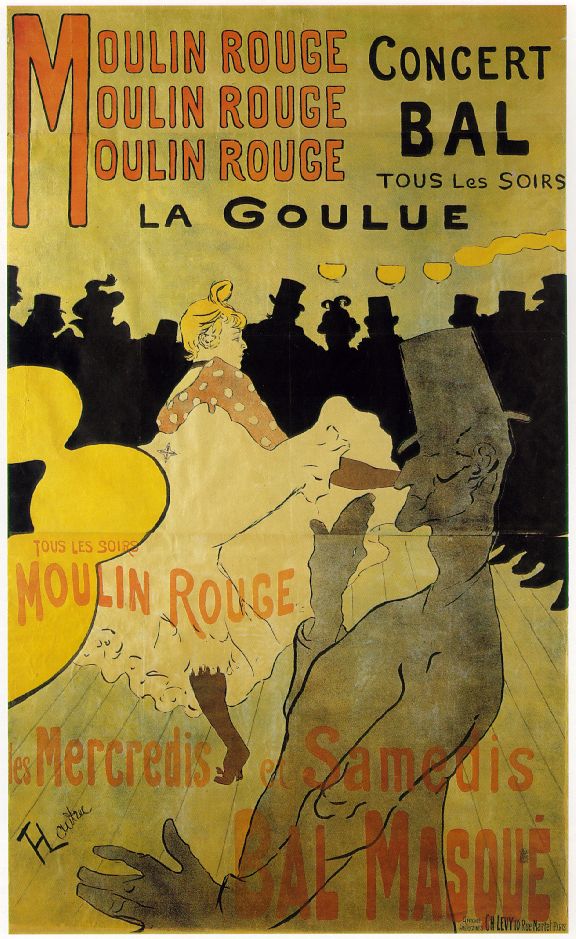
1891, Moulin Rouge
Vienna
Secession
Founded in 1897 by artists Gustav Klimt, Koloman Moser, Josef Hoffmann, Joseph Maria Olbrich, Max Kurzweil, and others. the secession was a revolt against Historicism. The aim of the group was to create a new movement that owed nothing to do with traditional styles and historical influence.
Gustav Klimt

The Kiss by Gustav Klimt 1907/1908, Klimts works are amongst the most expensive sold worldwide, one making $135 million in 2006.
Koloman Moser
As well as being an artist and designer Moser was the co-founder of Wiener Werkstätte.

Lithograph by Moser in 1903
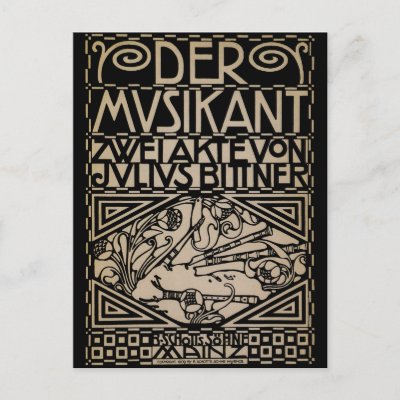
A postcard designed by Moser in 1909


The Wiener Werkstätte
was a workshop established in 1903 by Josef Hoffmann, Koloman Moser, Dagobert Peche that brought together architects, artists and designers whose first commitment was to design art which would be accessible to everyone.

Liquor glasses by Hoffmann, 1908

Flatware by Hoffmann in 1905

Sitzmaschine Chair with Adjustable Back by Hoffmann,1905
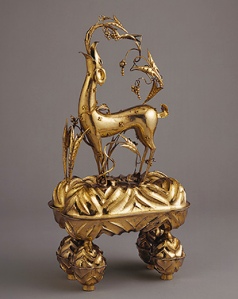
Dagobert Peche, Jewel Box, 1920
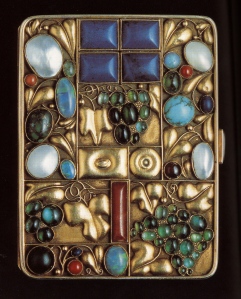
Josef Hoffmann, Cigarette case, 1912
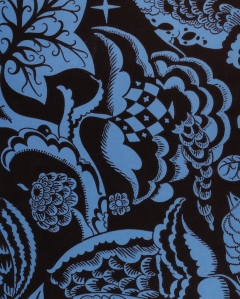
Dagobert Peche, Wundervogel, wallpaper design,1914
Paris Metro Entrances
By French designer Hector Guimard 1899 to 1905

Ranniger's poster, 1908 by Lucian Bernhard, Germany

Lucien Bernhard, Bernhard Fraktur Typeface, 1912
Charles Rennie Mackintosh
Scottish born Mackintosh was an architect, designer, watercolourist and artist.
He was part of the Arts and Craft and Art Nouveau movement.
His work was greatly influenced by Japanese art, in particular Japanese furniture.
Mackintosh's style was a contrast between right angles and floral decorative motifs.

Mackintosh's Hill House Chair was designed and built
between 1902 - 04 and made from stained black ashwood.
Another acclaimed Nouveau furniture designer was Frenchman Louis Majorelle.
Majorelle's designs were heavily influenced from natural forms,
in particular his pieces with wood which focused on shape and curves.
Majorelle was part of a group of artists, designers and industrialists called
École de Nancy, the group created high quality standard
decorative work that was in the Nouveau style.


René Lalique
French glass Designer
Rene Lalique was amongst
the first to use new materials. like other Nouveau designers, his work used
natural form characteristics and elegant smooth shapes. Lalique's later works were the beginnings of modern design and the Art Deco Movement.

Pansy Brooch 1903
(an early piece in the Art Nouveau style)

A later piece by Lalique in the Art Deco style, 1926

Frank Lloyd Wright's Spindle Cube Chair, 1902/06.
Wright was an American Architect, interior designer and writer.

Charles Rennie Mackintosh, Blackie Desk Chair,1904

Wright's studio designed by Wright in 1897.
Art nouveau architecture design

Horta House designed by Victor Horta,1898

Majolica Hosue by Otto Wagner, 1899
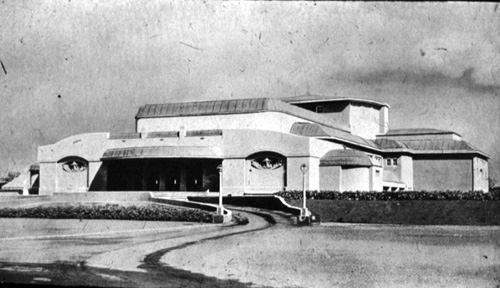
Henry van der Velde, Werkbund Theater, 1914
Paul Poiret ,1906, designed simple practical clothing conforming to the modernist ideal of ‘less is more’.
Designs were all about glamour and simplicity, a theme that runs throughout all areas of modernism.
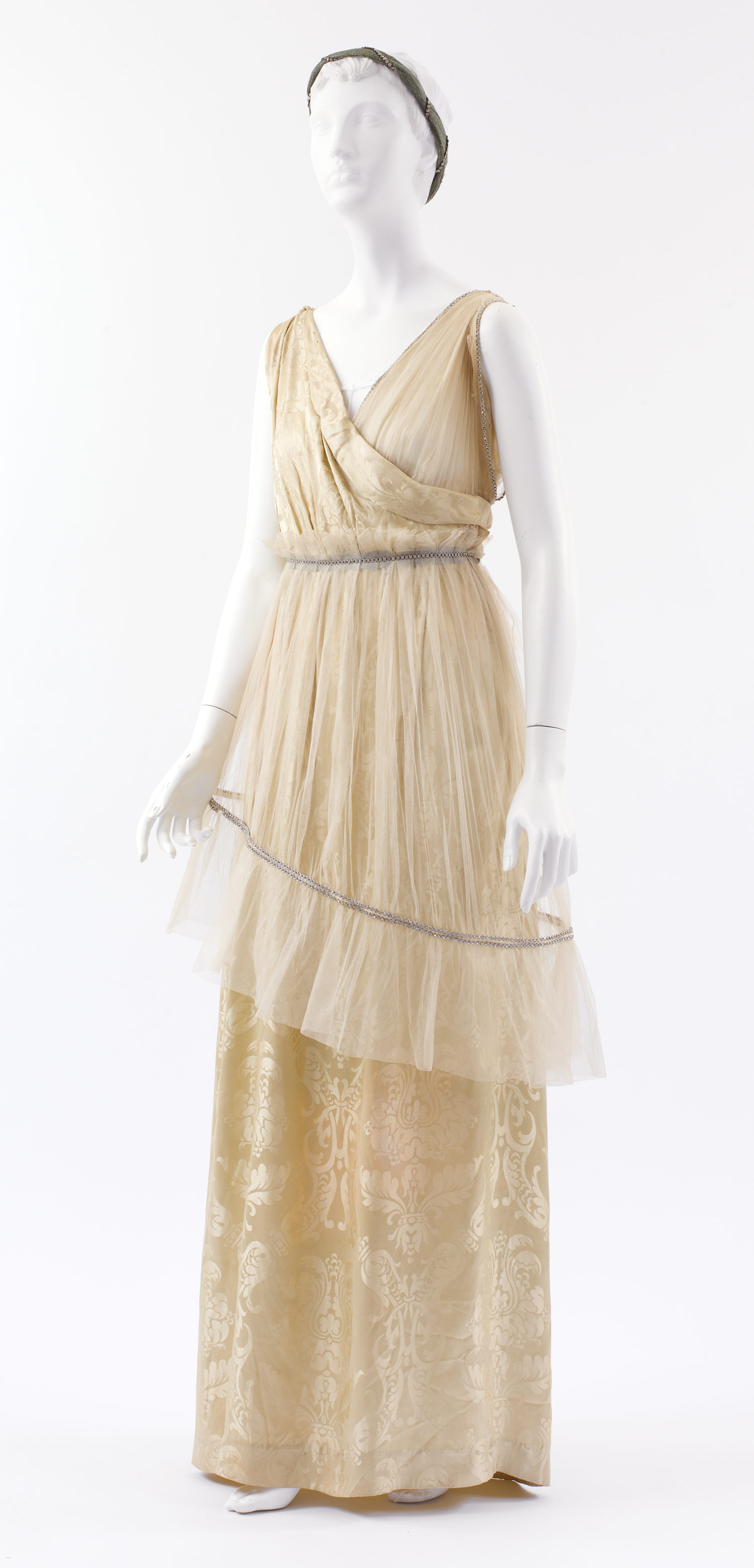
Deutcher
werkbund
The 'German Work Federation' was founded in 1907 by instigator Hermann Muthesius. Made up of German artists, architects, designers and industrialists the Werkbund group were crucial in the development of modern architecture and industrial design and the later creation of the Bauhaus School.

Industrial clock designed by Peter Behrens for AEG,1909

Peter Behrens AEG Electric fan, 1908

Tuteur Haus by Hermann Muthesius, 1912-1913

The Robie House Designed by Frank Lloyd Wright, 1910

1911 Opel Automobile advertisement by Hans Rudi Erdt
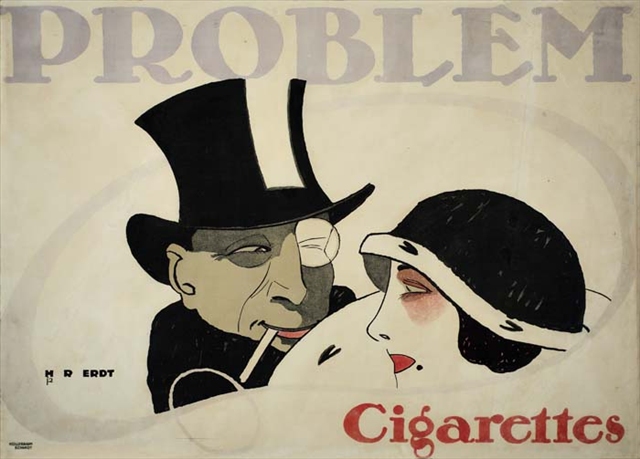
Problem Cigarettes, poster by Hans Rudi Erdt,1912

The Stoclet Palace designed by Josef Hoffmann and the Wiener Werkstätte was completed in 1911.
The interior (below) includes a mosaic of Gustav Klimts The Kiss.
suprematism
An art movement foudned by Kasimir Malevich that focused on geometric forms.
Malevich pioneered abstract art and originated the Avant-Garde Suprematist movement. The movement began in Russia and lasted from 1915-1916.
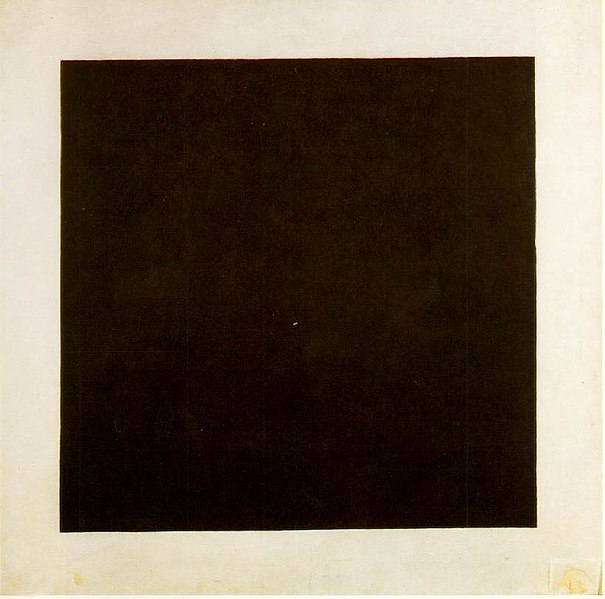
Black Square by Malevich, 1913

Suprematism by Malevich, 1916
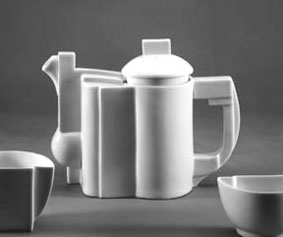
Suprematist design
Suprematistic, Moholy-Nagy, 1923

Dada or Dadaism is a movement of culture that begun in Europe. Dada peaked from 1916- 1922 corresponding with WW1. The movement consisted of visual arts, poetry, art theory, theatre and graphic design. The purpose of the movement was to create artwork that ridiculed the modern new world. As well as being anti-war, Dada was also anti-bourgeois and anarchistic in nature.
Dada was an informal movement that protested against the bourgeois nationalist and colonialist interests which most Dadaist believed was the cause of the War. artists such as Hans Richter believed that Dada was not art but rather anti-art because of Dada's lack of traditional aesthetics. Dadaist hoped that through their art they could destroy traditional culture and aesthetics.
Dada was described (by its own artists) as "a phenomenon bursting forth in the midst of the postwar economic and moral crisis, a saviour, a monster, which would lay waste to everything in its path. [It was] a systematic work of destruction and demoralisation... In the end it became nothing but an act of sacrilege."
In Zurich during 1916, Hugo Ball, Emmy Hennings, Tristan Tzara, Jean Arp, Marcel Janco, Richard Huelsenbeck, Sophie Täuber, and Hans Richter, along with others, discussed art and what inspired their art, they then would put on performances expressing these opinion of anti war at the Cabaret Voltaire. Having left Germany and Romania during World War I, the Dada artists found themselves in Switzerland, here they began to rebel against the social and political ideas of the time through abstraction.
The characteristics of Dada
- Never follow any known rules
- Dadaist aimed to provoke an emotional reaction from their viewer.
- Abstraction and Expressionism were the main influences on Dada, followed by Cubism and Futurism.
- There were no limitations as to what mediums dadaists could use, although collage, photo montage and the use of ready made objects became prominently used within the movement.
- The best-known movement Dada was directly responsible for is Surrealism.
Dada self-destructed when it was in danger of becoming "acceptable".
When World War I ended in 1918, most of the Dadaists from Zurich returned to their home countries, and some began Dada activities in other cities. Others, such as Swiss native Sophie Täuber, remained in Zurich.
Using an early form of Shock Art, the Dadaists thrust mild obscenities, scatological humour, visual puns and everyday objects into the public eye. Marcel Duchamp performed the most notable outrages by painting a moustache on a copy of the Mona Lisa.
Dada artists and their work

Collages made from torn coloured paper were scattered and
then glued as they landed.

Man Ray
was an American artists and modernist that contributed greatly
to the Dada and surrealist movements. he is best known for his Avant-Garde photography.

Marcel Duchamp
was a french artist that challenged the conventions of the artistic process and art marketing.
Duchamp early work experimented with post-impressionism, cubism and fauvism.
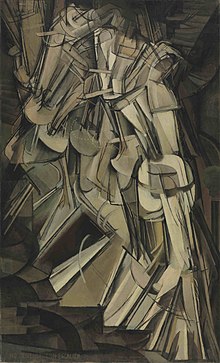
Jean (Hans) Arp
was part of the founding group of the Zurich Dada artists.
His works were about experimenting with the ideas of "continuous contradiction"
and "immediate spontaneity" and the 'law of chance'.

Collages made from torn coloured paper were scattered and
then glued as they landed.

Man Ray
was an American artists and modernist that contributed greatly
to the Dada and surrealist movements. he is best known for his Avant-Garde photography.

The Rope Dancer Accompanies Herself with Shadows
Painted in 1916 when Man Ray lived in New York City. After 1918 Ray's began to work more
in the Dada style and used techniques known to Duchamp such as "readymades".
In 1920 Man Ray, Katherine Dreier and Duchamp founded the Société Anonyme, an organisation which in effect was the first museum of modern art in the U.S.
Marcel Duchamp
was a french artist that challenged the conventions of the artistic process and art marketing.
Duchamp early work experimented with post-impressionism, cubism and fauvism.

Nude Descending a Staircase, No. 2 painted in 1912.
In his studio he mounted a bicycle wheel upside down onto a stool, spinning it occasionally just to watch it. the Bicycle Wheel is considered Duchamp's first of his "Readymades", this particular installation was never submitted for any art exhibition and was eventually lost.

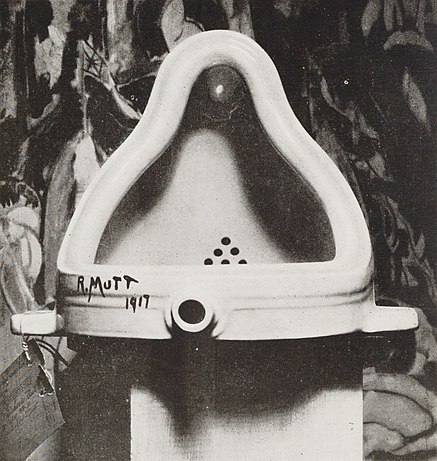
The 'Fountain' is one of Duchamp's most recognisable readymade pieces.
The piece was submitted in 1917 to the Society of Independent Artists and rejected.
Francis Picabia
Pacabia became involved in the Dada movement during
in 1919 in Zurich and Paris before he moved onto to surrealist art in 1921.

Star Dancer on a Transatlantic Steamer 1913 watercolour.
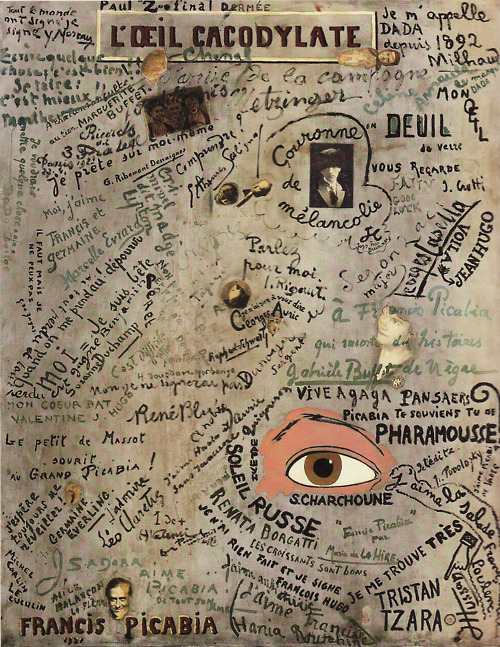
The Cacodylic Eye (L'Oeil cacodylate) 1921
Raoul Hausmann
was a key figure of dadaism in Berlin. his work was made
up of photographic montages (collages).
up of photographic montages (collages).
he was also considered an important influence on the
Avant-Garde movement in the aftermath of World War I.

'Tatlin At Home' Collage 1920
Other works




El lissitzky

Cover of Poun, 1923

1924

Poster, Lithograph, 1919

Photomontage, 1930
De Stijl
The De Stijl movement started in 1917 and ended in 1931.

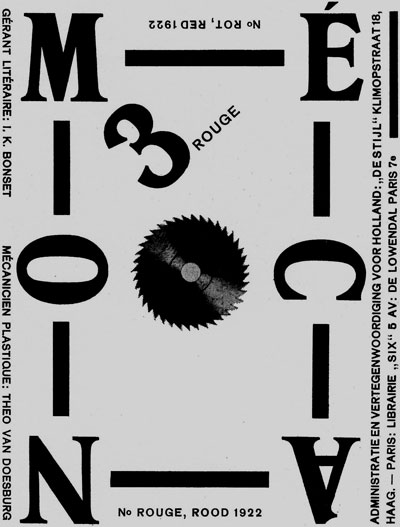


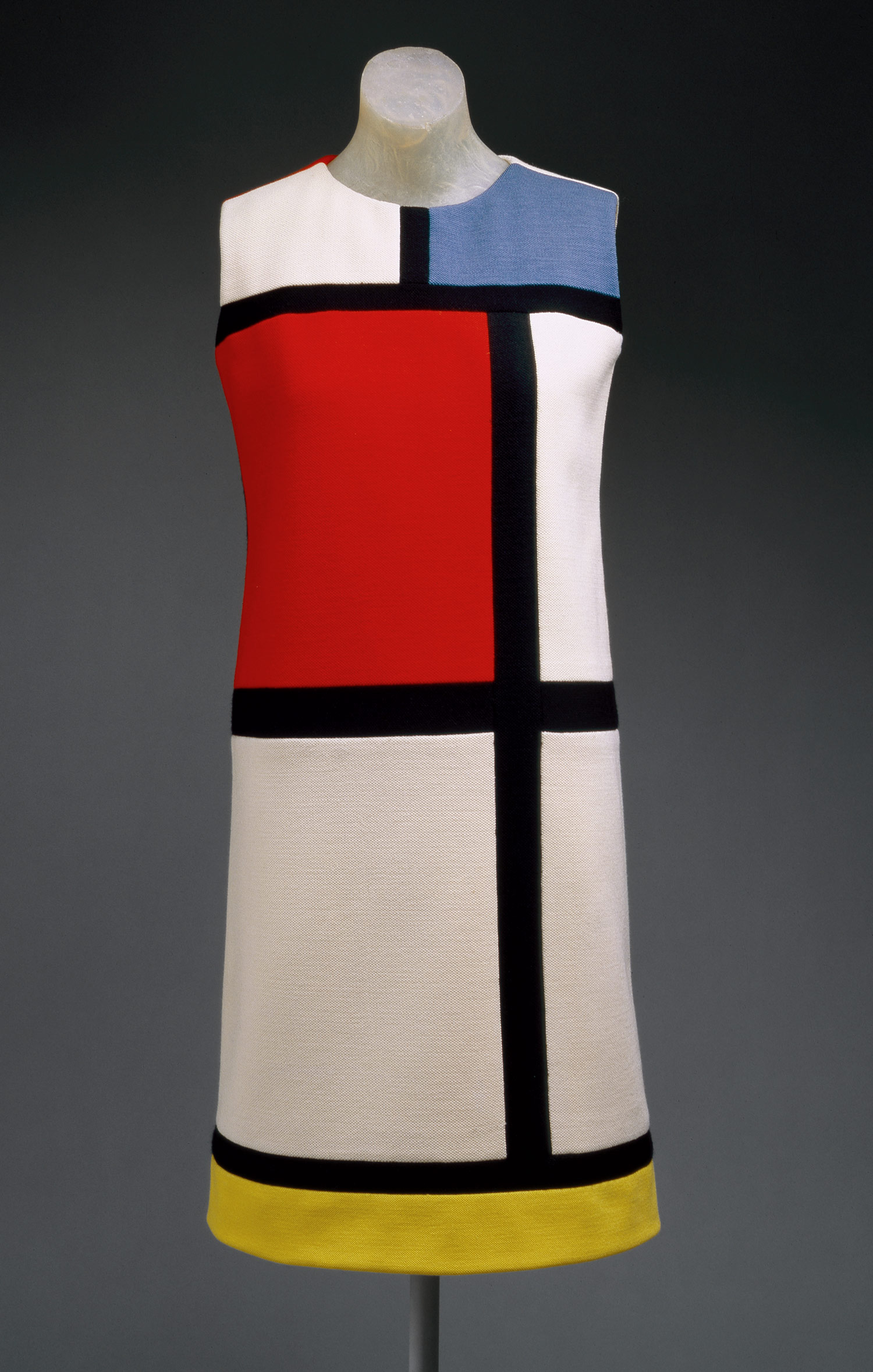

Red And Blue Chair, 1917

The Rietveld Schröder House, 1924

Zig Zag Chair, 1934

Dining Chair, 1919
Avant-Garde movement in the aftermath of World War I.

'Tatlin At Home' Collage 1920
Other works

Leonard Manasseh

Raoul Hausmann

Paula Scher

Kurt Schwitters famous 'Merz' pictures, Collage, 1923
Kurt Schwitters was considerd the master of callage and is known as the grandfather of Pop Art and the happening of post-modernism.
El lissitzky
Lissitzky used colour and basic shapes to make strong political statements within his art. Lissitzky also challenged conventions art and its conventions. His career peaked from 1919-1930's.
Lissitzky's worked within graphic design, typography, photography, photomontage, book design, and architectural design. His work deeply influenced movements and related figures such as De Stijl and the Bauhaus.

Cover of Poun, 1923

1924

Poster, Lithograph, 1919

Photomontage, 1930
De Stijl
The De Stijl movement started in 1917 and ended in 1931.
De Stijl embraced abstract and basic visual elements such as geometric forms and primary colours, influenced by Bauhaus. The movement was a reaction against the decorative excesses of Art Deco. De Stijl art was envisioned by its creators,
Led by the painters Theo van Doesburg and Piet Mondrian. De Stijl had an influence on modern architecture in particular and the ruse of the
International style. characteristics of Dada, Suprematism and Cubism
can be found within the movement.

Theo van Doesburg, Simultaneous Counter-Composition, 1929-30

Magazine cover, letterpress on paper, by Theo van Doesburg, 1923

The cinema and ballroom of the Cafe Aubette, by Theo van Doesburg, 1928

Piet Mondrian
Composition with Yellow, Blue, and Red,
1937–42

"Mondrian" day dress,1965
By Yves Saint Laurent
Gerrit Rietveld
Dutch furniture designer Rietveld was one of the
principle member of De Stijl.
Rietveld designed his famous Red and Blue Chair in 1917 and in
1919 became a member of the De Stijl movement.

Red And Blue Chair, 1917

The Rietveld Schröder House, 1924

Zig Zag Chair, 1934

Dining Chair, 1919
Bauhaus
The Bauhaus school was founded in 1919 by Walter Gropius in Weimar.
The Bauhaus style had a significant influence on modern architecture and modern design.
The Bauhaus style, also known as the International Style, was characterised by the absence of ornamentation and by harmony between the function of an object or a building and its design. The most important influence on Bauhaus was modernism, a cultural movement. Gropius and the Bauhaus used radical simplified forms that were both rational and functional; These 'guidelines' were followed later by designers of modernism. One of the main objectives of the Bauhaus was to unify art, craft, and technology. The machine was considered a positive element, and therefore industrial and product design were important components, ultimately Bauhaus established industrial design.


Armchair Wassily, by Marcel Breuer, 1925

Ludwig Mies Van Der Rohe,The Barcelona Chair & Ottoman, 1929

Chair And Arm Chair, Van Der Rohe, 1927

Eileen Gray, Monte-Carlo sofa, 1929




Inside the Bauhaus School

Crystal Gradation, 1921, By Paul Klee
(a student of the Bauhaus School)


Composition VI, 1913, By Vasily Kandinsky
(a student of the Bauhaus School)
Bauhaus influenced later Art movements such as
Abstract Expressionists and Op-Art. Expressionist's theme revolved around the colour theories which evolved from the Bauhaus classes.

Jan Tschichold
was a leading advocate of modernist design. Tschichold developed the principles of modernist typography within his manuals.

Sabon
A serif font designed by Tschichold that he
referred to as the 'universal alphabet'

Cover, 1925
From 1935
onwards materials such as Styrofoam, PVC, acrylic, nylon and rubber emerged.
Designers looked to
traditional forms or materials for inspiration and embraced new materials and
produced radical innovative designs that expressed the optimistic spirit of
high-style modernism.
Modernism
Architecture
During the 1930s as
much as 15% of the urban populations were living in poverty, one of the many
social problems of the decade. Modernism came with
the promise that it could resolve the problem by creating
more housing, this made the movement grow in popularity.
However the
movement failed to meet its ideology which resulted in most
modernist buildings being demolished during the 1970's.
Modernism
architecture was inspired by technology, lines and angles were used to
connote speed and movement.
'Form Follows
Function'
'no unnecessary
ornament‘
“a machine for
living in”

The Villa Savoye
Designed by Swiss architects Le Corbusier and his
cousin, Pierre Jeanneret, and built between 1928 and 1931
using reinforced concrete.
Uses new materials,
bold bright colour, simple geometric shape gives it elegance.

Kensal House
Designed by Maxwell Fry
1938, London
One of the first
urban villages
The International style
volume rather than mass
balance rather than preconceived symmetry
the expulsion of applied ornament
The International Style developed in 1920s Western Europe. The style coincided and shared many characteristics with other radical movements such as De Stilj and Bauhaus.
radical simplification of form, a rejection of ornament, and adoption of glass, steel and concrete as preferred materials are some of the characteristics of the style.

By Richard Neutra in Los Angeles, 1929

1982, by Owings and Merrill Skidmore, the Georgia-Pacific Centre

Inside the Villa Savoy, by Le Corbusier, 1931
Art Deco
The movement began in Paris during the
1920’s.
It
embraced influences from many different styles of the early
twentieth century including neoclassical, constructivism, cubism,
modernism and
futurism and drew
inspiration from ancient Egyptian and Aztec forms.
Art
deco had a profound influence on many later artistic styles, such
as Memphis and pop art.

The art
deco spire of the Chrysler Building in New York City
built 1928–1930
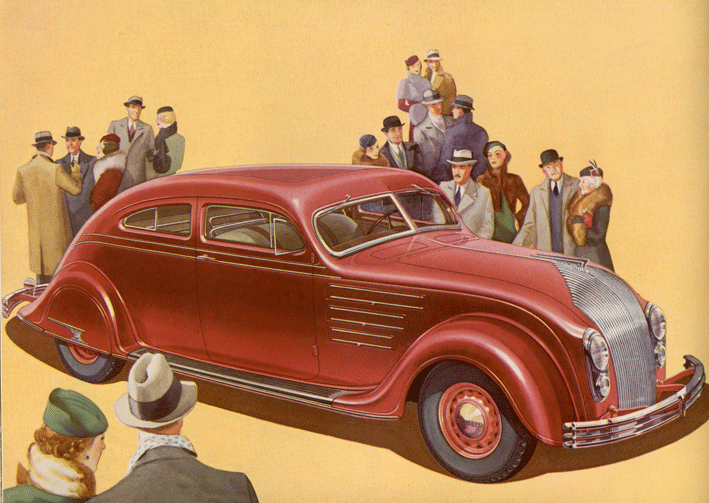
1934 Chrysler
Airflow

1945, designed By Manuel
Ortiz Monasterio, Bernardo Calderón,
Luis
Ávila and José Antonio Cuevas

U.S. Works
Progress Administration poster, John Wagner, artist, 1940

U.S. postage stamp
1939

By Donald Deskey,
1927 Table lamp.
Chrome-plated
metal and glass 
By Donald Deskey,1927
‘Skyscraper’
Furniture was
coinciding with architecture, structure,
bold shapes and colours.
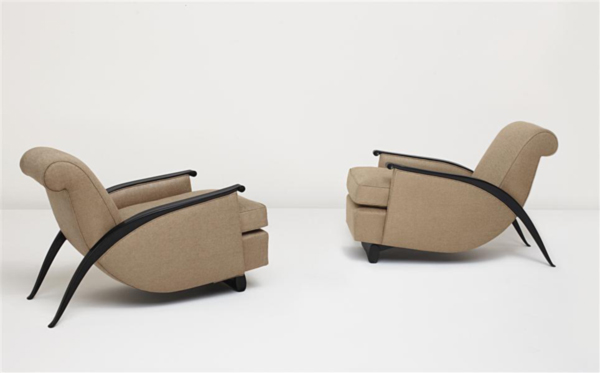
Armchairs By Emile Jacques Ruhlmann,
1930
Soft edges and shape.
AM Cassandre
French Artist
1901-1968

Cassandre,'Normandie' Poster,1935

Cassandre,'Nord Express'
Compagnie Internationale des Wagons-Lits Poster,1927
Compagnie Internationale des Wagons-Lits Poster,1927
lester beall

Bealls work was considerd avant garde, he worked with primary colours and was influenced by other movements such as Surrealism, Constructivism and Dadaism.

Posters, 1947
Joseph Binder
Binder used principles derived from Cubism and De Stijl to his posters.
his designs were focused on the reduction of geometric forms, colour and the psychological impact of colours.


Binders famous New York Worlds Fair poster, 1939
Print Magazine first issue
in 1940 Print Magazine was launched, publishing
new visual
culture and design.

ladislav
sutnar
Sutnar's work uses influences from De Stijl, and is reduced to primary colors, straight lines, and an overall harmony of irregular text alignment. His strong use of diagonal elements, typography and imagery more strongly conveys his design style to be classified as Constructivism. Similar to Jan Tschichold's work with modern typography, his style is limited to type and color within strict layouts. his work is also influenced by Bauhaus, he used simple designs that suggests motion together with vivid colors and directional patterns.

1931

poster for american airlines, 1958

the glass tea set, 1931

1961
Francis Bacon
His art was influenced by Surrealist abstraction but it did not
gain much critical success. Bacon got inspiration from Surrealism, film and photography, he was also inspired by his own trauma from post war art.
Bacon's paintings have inspired important artists of the 21st century including Julian Schnabel and Damien Hirst.

1944, Crucifixion

Study after Velázquez's Portrait of Pope Innocent X, 1953
Paul rand
American graphic designer Rand was one of the founders of the Swiss style.
He was most known for his logo designs including IBM, UPS and ABC.
ABC Logo
American Broadcasting Company, 1962
Producto Cigars Poster
El Producto poster, 1953

IBM logo, 1956

The Glass House designed by Phillip Johnson, 1949
Jackson Pollock
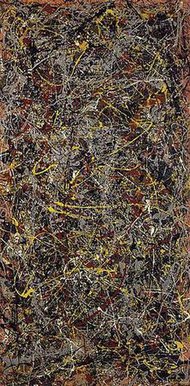
No 5, 1948
Pollock's most famous paintings were made during the "drip period" between 1947 and 1950. By the 1960s, Pollock was recognized as the most important figure in American painting. His work brought together elements of Cubism, Surrealism, and Impressionism.
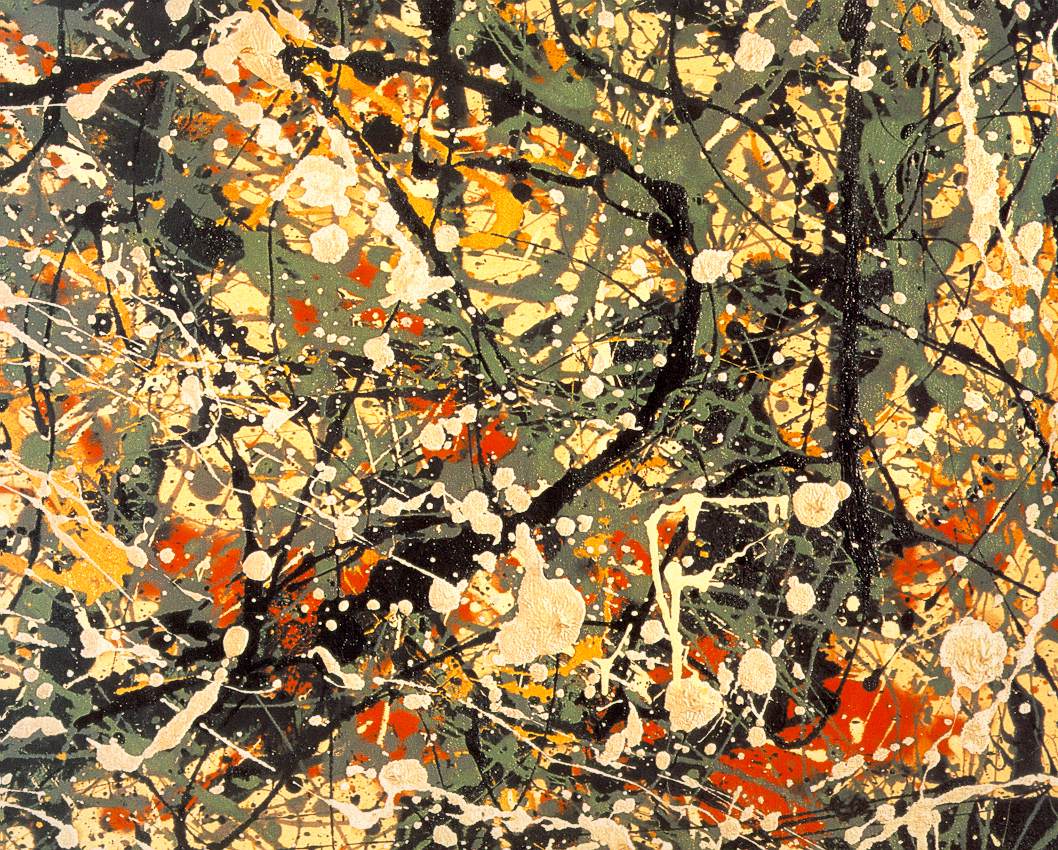
Number 8, 1949
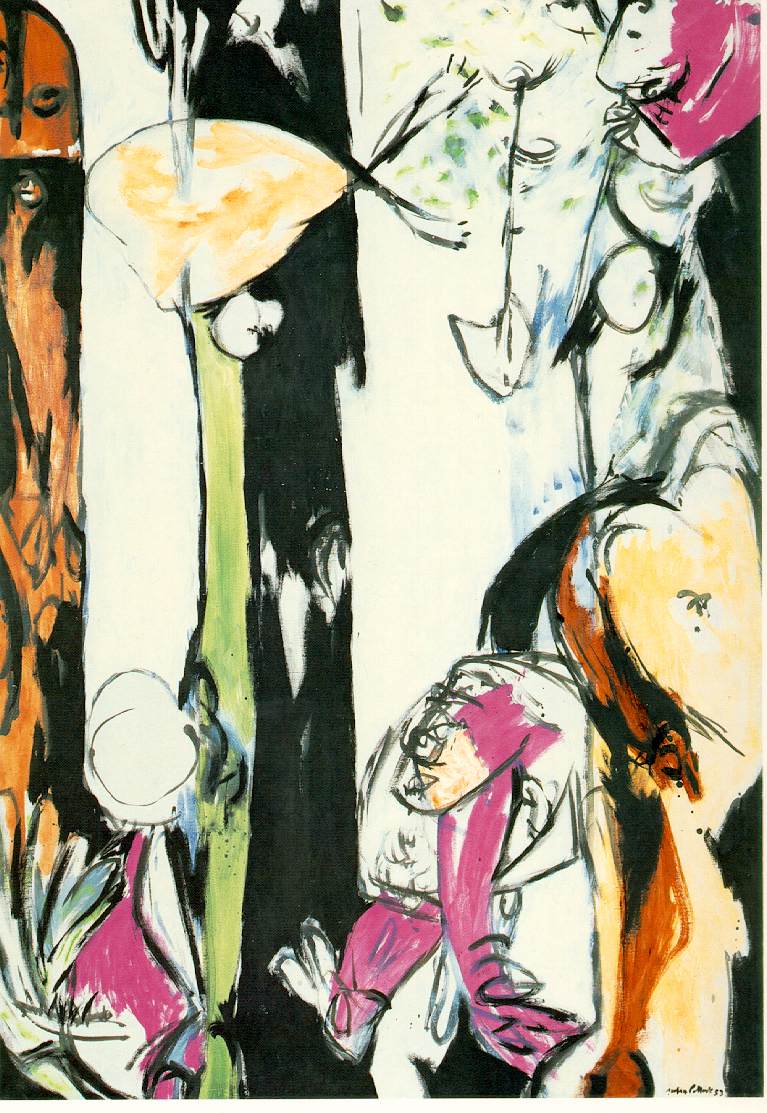
Easter and the Totem,1953
Ray and Charles Eames

Plywood Chair, 1945-46

La Chaise,1948

Chair Shell Experiments, designed 1941-45
In 1953 IBM announced the first mass produced PC the IBM 650.
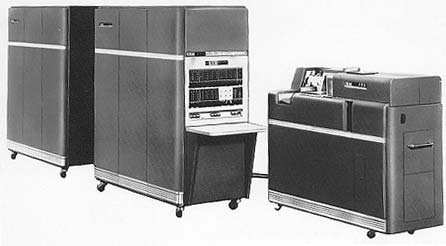
Saul Bass
Bass was most known for his poster design and motion picture title sequences. He also designed iconic corporate logos for AT&T and United Airlines.
AT&T logo 1986

Poster for Vertigo, 1958, Directed by Alfred Hitchcock

Movie poster, 1955
The International Typographic Style
The 'Swiss Style' developed during the 1950's and emphasized cleanliness and readability within graphic design. characteristic of the style include asymmetric layouts, use of a grid, sans-serif typefaces like Akzidenz Grotesk, and flush left, ragged right text.

Hofmann, Armin, Die Gute Form, 1954

Mueller-Brockmann, Josef, Opernhaus Zurich, 1968

Neuberg, Hans, Konstruktive Grafik, 1958
The Eames Lounge Chair and ottoman
Designed by Charles and Ray Eames, 1956

Op Art
Op art is derived from the constructivist practices of the Bauhaus. This German school, founded by Walter Gropius, stressed the relationship of form and function within a framework of analysis and rationality.
The term Op Art first appeared in print in Time magazine in October 1964. Beginning in 1966 Bridget Riley began to produce colour-based op art.

Movement in Squares, by Bridget Riley, 1961

Victor Vasarely,1950, Zebre

Victor Vasarely,1981,Tekers
Pierre Cardin designs
used geometric shapes and motifs. In 1959 he
launched the first ready-to-wear collection for Printemps.

Geometric shapes and
bold colours that
coincide with modern architecture design.
Mid 60's fashion was Influenced by rock music,
"Mod" scene makes London major fashion centre with fun, revolutionary
clothes: bell bottoms, psychedelic prints, wild colours, dresses made of vinyl,
paper, cellophane, metal, covered in mirrors; go-go boots; ruffled shirts for
men; Nehru jackets; fur vests.
Presentation on Modernism and Postmodernism
'Now'
The Internet
what is the Internet
The Internet is a global system of interconnected computer networks that use the standard Internet protocol suite to serve billions of users worldwide. The Internet is a network of networks used by millions of private, public, academic, business, and government networks that are linked by an array of electronic, wireless networking technologies. The Internet carries an extensive range of information resources and services, such as the inter-linked hypertext documents of the World Wide Web and the infrastructure to support email.
Traditional communications media including the telephone, music, film, and television are reshaped/redefined by the Internet, because of new services it has produced such as Voice over Internet Protocol (VoIP) and Internet Protocol Television (IPTV). Newspaper, book and other print publishing are adapting along with technology. The Internet has enabled and accelerated new forms of human interactions through instant messaging, Internet forums, and social networking.
Where it all started
The internet traces its origins to the ARPAnet, created by the US Defence Department’s Advanced Research Projects Agency in the 1960s. The ARPANET in particular led to the development of protocols for internetworking, where multiple separate networks could be joined together into a network of networks, thanks to the work of British scientist Donald Davies whose ground-breaking work on Packet Switching was essential to the system.
During the late 1990s, it was estimated that traffic on the public Internet grew by 100 percent per year, while the mean annual growth in the number of Internet users was thought to be between 20% and 50%. This growth is often attributed to the lack of central administration, which allows the growth of the network. As of 31 March 2011, the estimated total number of Internet users was 2.095 billion (30.2% of world population). It is estimated that in 1993 the Internet carried only 1% of the information flowing through two-way telecommunication, by 2000 this figure had grown to 51%, and by 2007 more than 97% of all tele-communicated information was carried over the Internet.



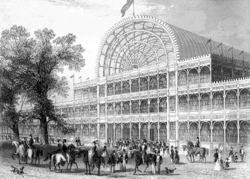



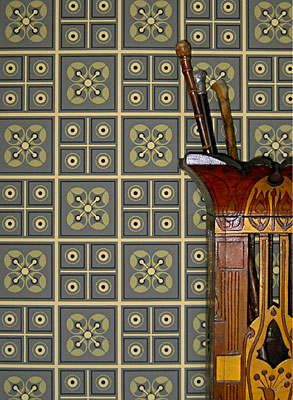

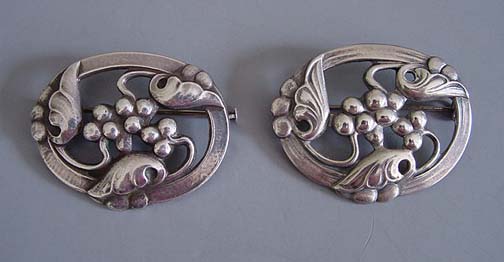



No comments:
Post a Comment